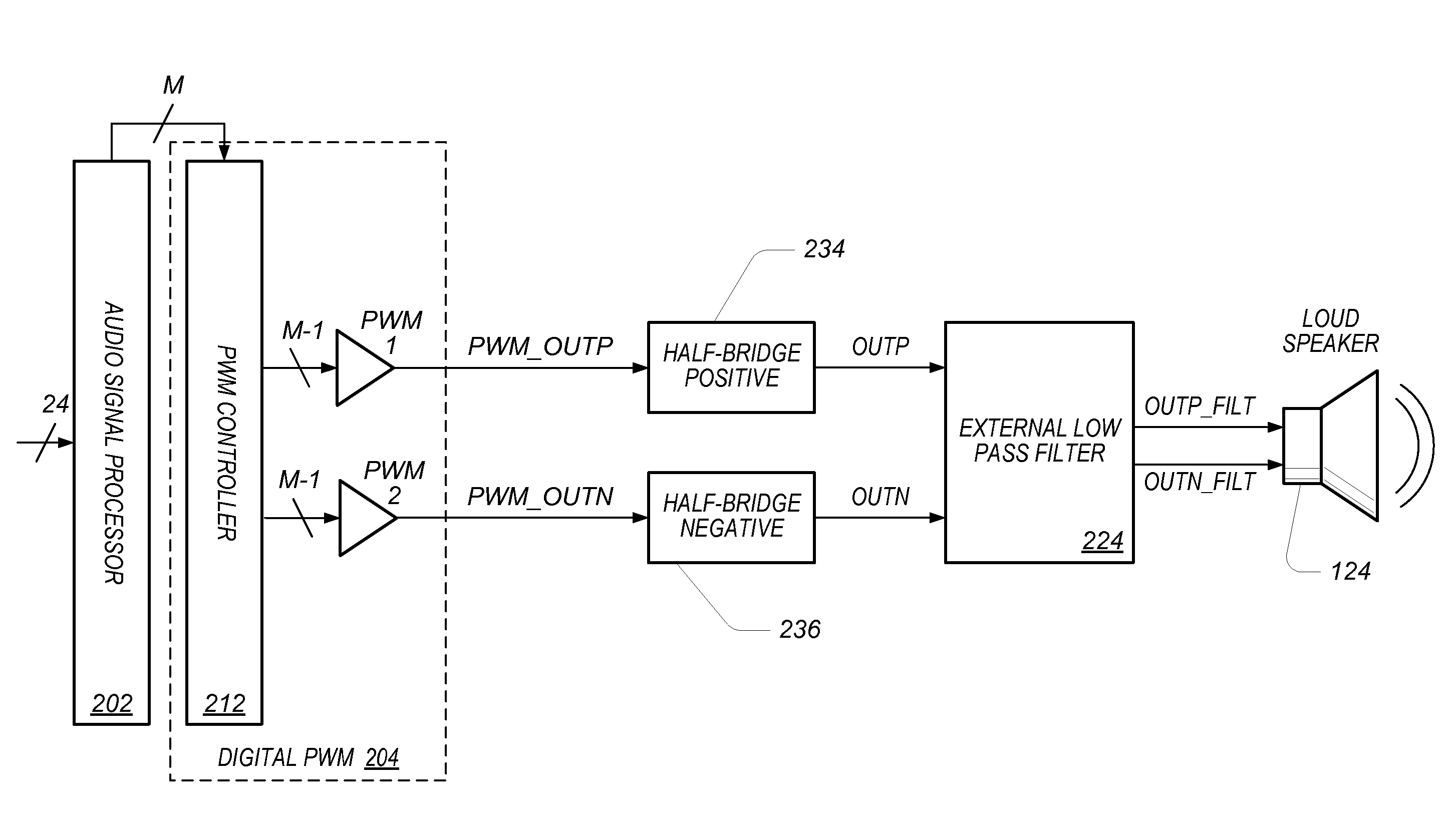Attenuating Non-Linear Noise in An Amplifier with Alternating DC -offset Correction
a non-linear noise and amplifier technology, applied in the field of signal processing, can solve the problems of increasing the electrical noise floor of a class-bd amplifier, zero-crossing noise, distortion of the waveform at the output of the amplifier,
- Summary
- Abstract
- Description
- Claims
- Application Information
AI Technical Summary
Benefits of technology
Problems solved by technology
Method used
Image
Examples
Embodiment Construction
[0048]FIG. 1 illustrates exemplary systems, which may utilize the techniques described above. More specifically, FIG. 1 illustrates exemplary systems, which may utilize an audio subsystem, (which may include an amplifier such as a Class D amplifier), featuring various improvements. As shown, embodiments of the techniques disclosed herein may be used in any one ore more of various systems which involve the amplification of signals. For example, embodiments of the invention may be used in various systems that operate to amplify audio signals for provision to a loudspeaker for audible presentation. As shown, the exemplary systems may include a display device 102; an audio system 104, such as a stereo amplified docking station for a portable music player, CD player, etc.; or a telephone 106 and 108, such as a smart phone, e.g., an iPHONE™ or other similar type of smart phone. It should be noted that FIG. 1 is provided by way of example, and is by no means intended to be exhaustive. Acco...
PUM
 Login to View More
Login to View More Abstract
Description
Claims
Application Information
 Login to View More
Login to View More - R&D
- Intellectual Property
- Life Sciences
- Materials
- Tech Scout
- Unparalleled Data Quality
- Higher Quality Content
- 60% Fewer Hallucinations
Browse by: Latest US Patents, China's latest patents, Technical Efficacy Thesaurus, Application Domain, Technology Topic, Popular Technical Reports.
© 2025 PatSnap. All rights reserved.Legal|Privacy policy|Modern Slavery Act Transparency Statement|Sitemap|About US| Contact US: help@patsnap.com



